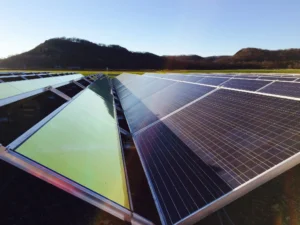‘State of Community Solar’ report predicts 120% growth over next 5 years


(A community solar project in southern Minnesota. Credit: Clean Energy Resource Teams / Creative Commons)
In the next five years, community solar is expected to grow nearly 120% and at least 6 GW of capacity is expected to come online in existing markets, according to a new report from Arcadia.
The first edition of the “State of Community Solar” report highlights areas for potential growth in 2024 and identifies challenges that need to be overcome to allow the industry to achieve its full potential. It predicts “tremendous” growth, Arcadia says.
“As the largest manager of community solar projects in the United States, we at Arcadia have a unique vantage point and can say confidently that 2023 was a game-changer for our industry,” said Kiran Bhatraju, Arcadia’s founder and CEO. “This report seeks to catalog the growth in our industry and the opportunities we see for 2024. We’re incredibly encouraged by this year’s progress and look forward to seeing how the community solar industry continues to evolve.”
GO DEEPER: Arcadia founder and CEO Kiran Bhatraju joined Episode 38 of the Factor This! podcast to discuss the role of data in upending the energy industry’s long-held power dynamics. Subscribe wherever you get your podcasts.
The report also found growing public support for community solar, with recent polling showing an “overwhelming majority” of Americans support the expansion of solar power. Several states made “significant” upgrades to their statewide community solar programs in the past year, including Minnesota, Maryland, Oregon, New Mexico, and New Jersey.
The Inflation Reduction Act (IRA)’s tax credits, funding, and other initiatives have “effectively created the nation’s first community solar policy,” the report suggests, in addition to enabling new partnerships and business models. The report noted Arcadia’s own relationship with Google and EDPR NA Distributed Generation that will connect an estimated 25,000 households in the Midwest and Mid-Atlantic with 500 MW of distributed solar power.
It’s not all sunny skies for community solar, however. High interest rates, increased local opposition to projects, interconnection delays, workforce issues, unfriendly regulatory environments, and ongoing tariff issues between the United States and its trading partners are all still challenges, the report said.
The full report is available here.



